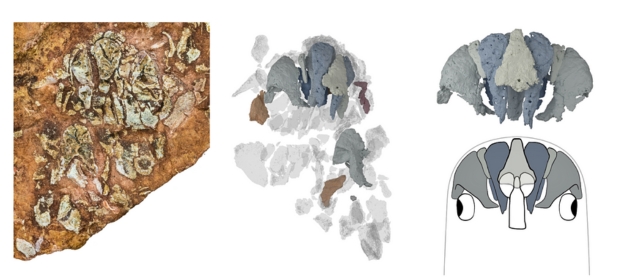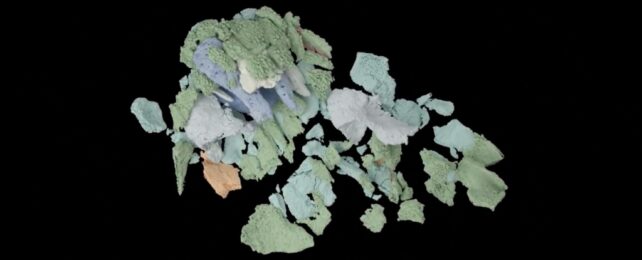The fossilized skull of a 455-million-year-old fish reveals an anatomy that's completely new to the study of vertebrates, bridging a knowledge gap of 100 million years.
Insights gained from studying the Ordovician jawless fish, Eriptychius americanus, suggest the early development of the vertebrate brain's protective dome was more complex than scientists thought.
"This fills a major gap in our understanding of the evolution of the skull of all vertebrates, ultimately including humans," says Richard Dearden, a palaeobiologist from the Naturalis Biodiversity Center in the Netherlands and lead author of the new paper.
The evolution of the braincase – a crucial structure in all vertebrates that prevents the delicate nervous system from being squashed – is poorly understood.
The fact they are distinctly different in living jawed and jawless fishes, however, might give us some clues.
A major change in vertebrate history was the development of gnathostomes, or jawed vertebrates, from a lineage of jawless ancestors. Unfortunately there's a gap in the fossil record between the earliest vertebrates and modern fish, with the earliest known preserved three-dimensional vertebrate braincase dating to some 100 million years after the first vertebrates appeared.
The jawless fish of the Ordovician period are some of the earliest vertebrates discovered to date, but little is known about their anatomy due to the lack of articulated remains. Until now, that is.
"On the face of it Eriptychius is not the most beautiful of fossils," Dearden says. "However, by using modern imaging techniques we were able to show that it preserves something unique: the oldest three-dimensionally preserved vertebrate head in the fossil record."
Using an X-ray technique called computed tomography, Dearden and his colleagues were able to digitally reconstruct the skull of Eriptychius from bone fragments that were discovered in a rock matrix in Harding Sandstone, Colorado, in the 1940s.

Their reconstruction shows that Eriptychius had a novel approach to cranial skeletonization, one that contrasted with modern jawed fish's single, fused braincase.
A symmetrical set of mineralized cartilages in Eriptychius's head between the olfactory bulb and eye area might have served to protect the brain and sensory organs.
This is similar in some ways to the anatomy of living jawless fish – called cyclostomes (think lampreys and hagfishes) – which have a fully bound cage of cartilage that holds the brain. But in Eriptychius, these cartilages are not joined together in an open framework, rather encasing their structures separately.
The team thinks these cartilages were formed from different cells than those involved in the cartilage braincases of living jawless vertebrates.
"The substantial difference between the neuro-cranial anatomy of the Ordovician Eriptychius to either cyclostomes or gnathostomes helps to explain why it has been so difficult to draw direct anatomical comparison between the skulls of the two living vertebrate groups," the team writes in their paper.
So Eriptychius may represent a step in the evolution of structures that set the brain apart from other parts of the head.
The researchers suggest these skull features may reflect the conditions from which both jawed and jawless vertebrates developed. It appears that the braincase filled in the space between the outer skeleton and brain in the earliest jawed vertebrates.
"These are tremendously exciting results that may reveal the early evolutionary history of how primitive vertebrates protected their brains," says palaeobiologist Ivan Sansom from the University of Birmingham in the UK.
"Eriptychius americanus appears to be the first evidence for a series of cartilages separating the brain from the rest of the head."
This level of reconstruction had not been attempted with the specimen before, despite its long residence in museum storage.
"This study emphasizes the importance of museum collections and the application of new techniques in studying them," Sansom says.
The research has been published in Nature.
